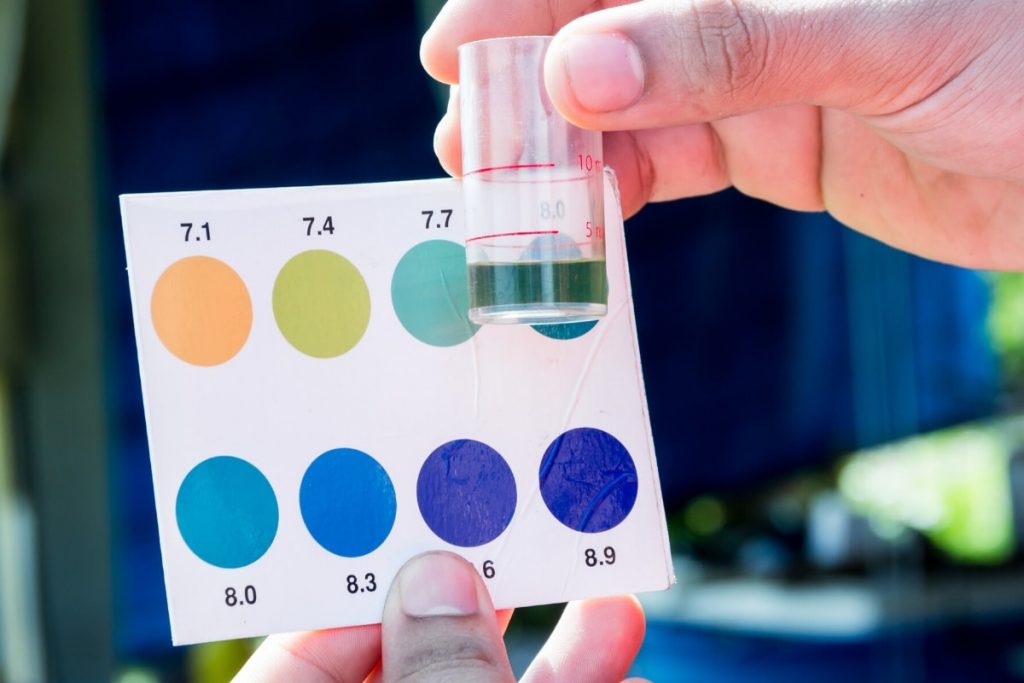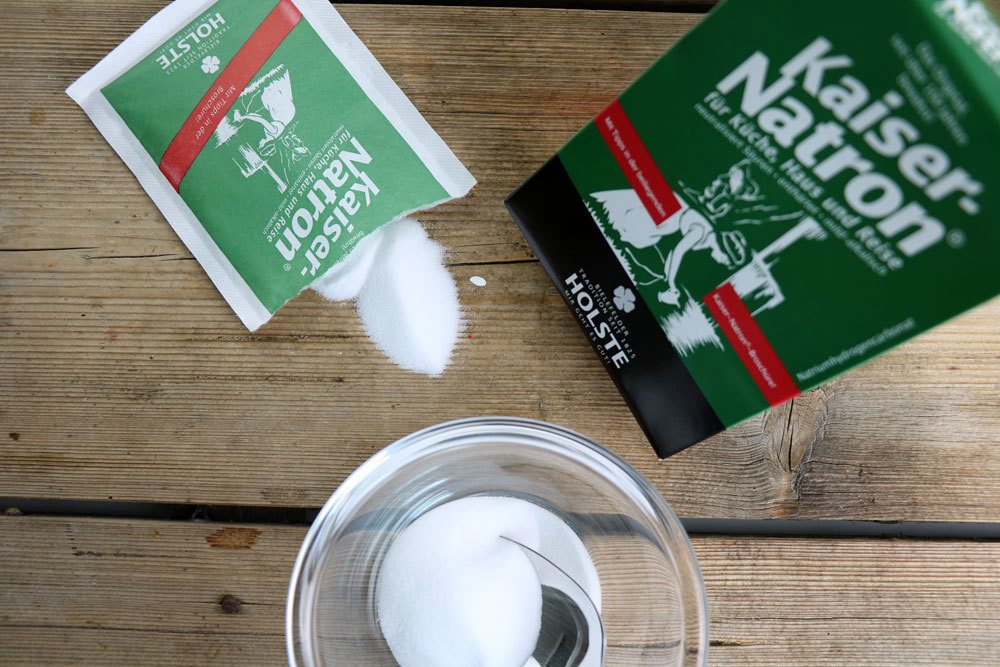Algae in the pond or aquarium are usually quite normal. But if they get out of hand, intervention is necessary. Chemicals are not always necessary for this, home remedies can also be used.
To the point
- Preventing algae is possible with simple measures
- Home remedies can help but also harm
- the correct application is crucial, especially with fish stocking
Contents
Prevention
Prevention is better than cure – this also applies to algae. A small algae bloom in the garden pond during spring is perfectly normal. However, if this does not subside on its own within a short time or if the amount of algae gets out of hand, you need to change some other factors.
- Planting: When aquatic plants or even the plants in the shore area decompose, the water is enriched with nutrients and decomposition products. Therefore, too many plants can cause excessive algae growth. Too few aquatic plants, on the other hand, are also detrimental to water quality. Appropriate planting is therefore important, but dead parts should be removed from the water immediately.
- Filters: Special filters with UV light can stop algae growth in the pond, as any floating algae is sucked through the filter and specifically killed and filtered out by the UV light.
- Fish stocking: Whether aquarium or garden pond – there should be at least one liter of water per centimeter of fish length. Thus, a maximum of 60 centimeters of fish should be placed in a 60 liter fish tank. You should also take into account that fish grow and reproduce. Therefore, it is better to consider the final size and choose a smaller number than would be possible.
- Light: Especially for aquariums, make sure that it is not placed directly in the sun. This is because sunlight drives the growth of algae. When creating a pond, make sure that it is at least partially shaded, for example by a nearby tree or hedge. In addition, in the summer, a parasol can be placed to provide partial shade for the garden pond.
- Cleaning: Manual or mechanical removal of algae is useful in both the aquarium and garden pond if the amount becomes excessive. In the pond, this can be done with a landing net. In aquariums, you can also remove loose algae with a close-meshed landing net. However, it is also possible to remove them from the panes with a magnetic scraper.
pH value
Garden ponds and aquariums should have pH values between 6.8 and 8.2. These can change during the day and are usually lower in the morning than in the evening. However, this is not a problem, but an indication that there is a biological balance in the body of water.
If the algae infestation increases too much, you should check the pH value. This is because too high a value can be the cause of the proliferation. The necessary test strips for the control are available, for example, in pharmacies but also online or in specialized stores.

Milk
The lactic acid from fresh whole milk is said to be able to kill algae, as it supposedly has a positive effect on the pH value of the water. However, it is problematic that in addition to lactic acid, it also contains fats and other nutrients and clouds the water for a long time. In addition, the effect has not been scientifically proven.
Milk is therefore not suitable for biologically combating algae infestation.
Vinegar
Just like milk, you can also use vinegar or citric acid to lower the pH value in garden ponds or aquariums. However, you must pay very close attention to some factors here:
- strong dilution, a maximum of one part vinegar to 2500 parts water is recommended
- dilute even more strongly in the case of vinegar essence
- check the pH value of the water immediately afterwards and then at regular, short intervals
Sodium bicarbonate
To remove an algae coating from stones or the pool wall, for example, you can certainly use sodium bicarbonate. For example, it is ideal to prepare a solution of baking soda or soda and water and spray the affected areas with it.
For garden ponds and aquariums, on the other hand, the agent is suitable for combating algae deposits only if the animals have been removed and the water drained. After that, you need to thoroughly rinse off the remnants of the solution.

Note: The mixture should consist of about 20 to 30 grams of baking soda and one liter of hot water, and should be allowed to act on the algae deposits for about an hour before being rinsed off.
Peat
Peat can also be used to lower the pH level.
- Place peat in jute bag or other permeable but tightly woven material
- hang peat bag in the water
- leave in water for at least one week
- control pH-value to avoid overacidification
Oak branch
This home remedy for fighting an algae infestation may seem strange at first, but it is effective and especially easy to use in the garden pond. To do this, all you need to do is place the branch of an oak tree at the bottom of the pond. On the other hand, the advantages are many:
- tannins contained in the bark are biological
- pH value of the water is lowered
- comparatively slow release
- the water is slowly acidified, thus gentle to all aquatic life
animals
In aquariums, for example, shrimp, snails and catfish can control the amount of algae. In the pond, snails and catfish can also be used. However, you must select the animals to suit the prevailing temperatures in each case.
Plants
Plants fulfill important functions – both in the garden pond and in the fish tank. On the one hand, they can clean the water. For this purpose, for example, water hose and water plant, which also spread comparatively quickly, are suitable.
For shading, for example, if you have created the pond in a very sunny area, you can bring in plants with large floating leaves. These have several advantages at once.
- They darken some areas of the pond, thereby reducing the spread of the particular type of algae.
- The plants consume nutrients and therefore reduce the possible excess in the water, eliminating the basis for algae infestation.
- They provide protection for aquatic life and create different temperature zones, which is positive for both algae and fish and co.
Water change
Another way to combat or prevent excessive algae infestation is to change the water regularly. This applies to both garden ponds and aquariums. However, you must remember not to change filter materials and water at the same time. Otherwise, the bacterial balance will be disturbed, and both plants and other living organisms will suffer.
Frequently asked questions
What is the connection between the amount of water and algae infestation?
The more water there is in a tank or garden pond, the more stable the biological balance. Aquariums and ponds should therefore always be designed or selected to be as large as possible.
What role does the design play in the garden pond?
If there are deep water zones and a graduated shore zone, the temperatures within the pond are very different. This means that algae cannot spread so easily. In addition, various animals can settle in the garden pond.









